17 Plants That Will Keep Unwanted Bugs Out of Your Garden, According to Experts
Keep aphids, mites, mosquitoes, and more away from your yard.
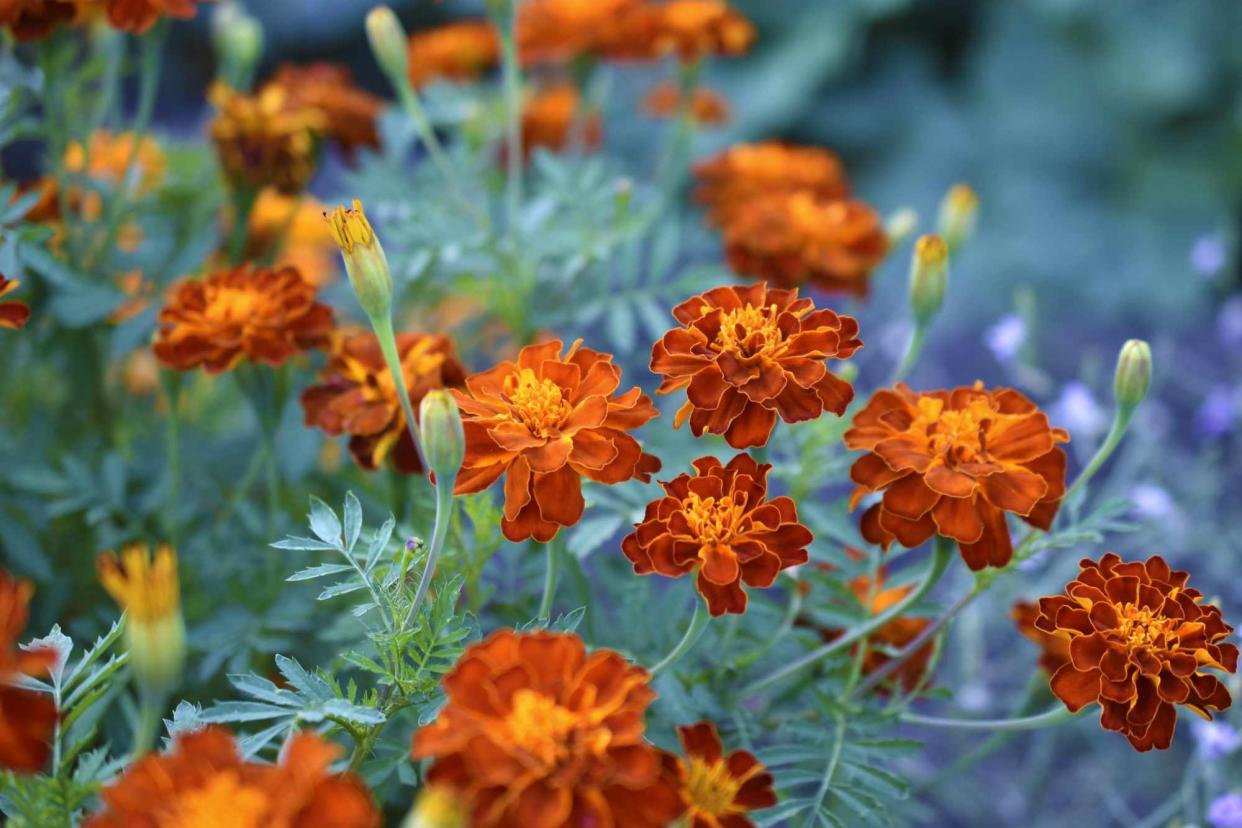
From tomato hornworms and mites to aphids and beetles, bugs can be a major nuisance in the garden. But rather than treating them with chemical pesticides, you can deter unwanted pests from disturbing your garden by growing plants that naturally repel bugs. Many plants have special properties, like a strong scent or compounds, that are unappealing to common garden pests. Growing them in your garden acts as a natural pesticide while adding beauty and fragrance to your yard. Ahead, we spoke to garden experts about their recommendations for the best plants to help keep harmful bugs at bay.
Meet the Expert
Carrie Spoonemore, co-creator of Park Seed'sFrom Seed to Spoon app, an app that makes garden planning easier
Chuck Pavlich, director of new product development at Terra Nova Nurseries, a plant nursery in Canby, Oregon
Related: 12 Plants That Repel Mosquitoes, According to Gardening Experts
Lavender
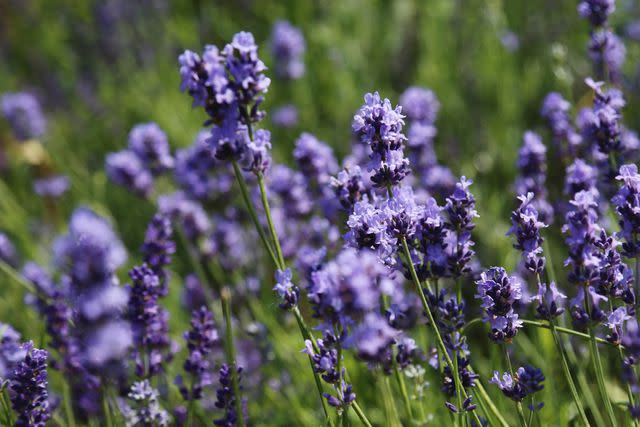
Lavender (Lavandula) is an herbaceous perennial with tall purple flowers that range from light to dark, says Carrie Spoonemore, co-creator of Park Seed's From Seed to Spoon app. It produces a fragrance that is calming to humans and unpleasant to pests like mosquitoes, flies, fleas, and moths.
Zones: 5 to 9
Size: 3 feet tall x 2 feet wide, depending on variety
Care requirements: full sun; well-draining, nutrient-rich soil
Rosemary
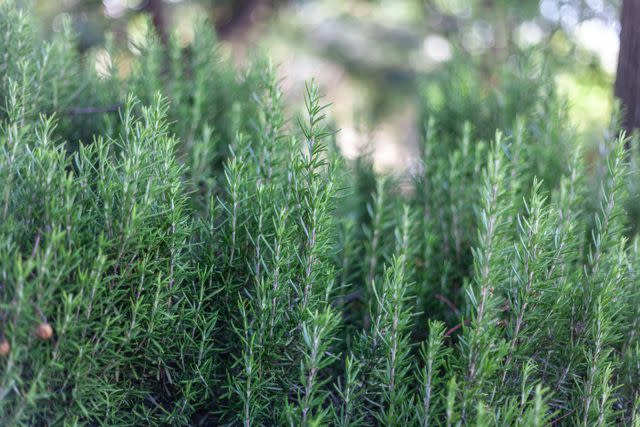
A woody evergreen shrub, rosemary (Salvia) has aromatic foliage filled with long-lasting oils that can be noticed from quite a distance, says Chuck Pavlich, director of new product development at Terra Nova Nurseries. Rosemary repels common garden pests, including Japanese beetles, carrot flies, slugs, and snails.
Zones: 7 to 9
Size: 3 to 6 feet tall x 2 to 4 feet wide, depending on variety
Care requirements: full sun; well-draining soil
Basil
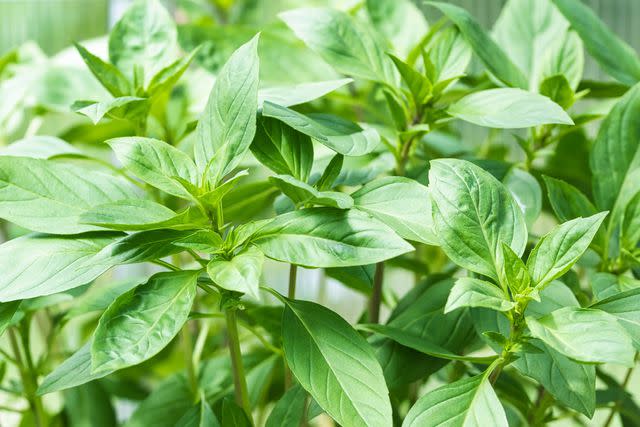
Another herb with pest-repelling properties, basil (Ocimum basilicum), can keep mosquitoes, flies, aphids, mites, and tomato hornworms away from the garden thanks to its strong aroma. (It can also help keep insects from coming inside. "Plant it near doors and windows to discourage pests from entering," says Spoonemore.)
Zones: 4 to 10
Size: 8 to 12 inches tall x 8 to 12 inches wide, depending on variety
Care requirements: full sun; well-draining soil
Chrysanthemum
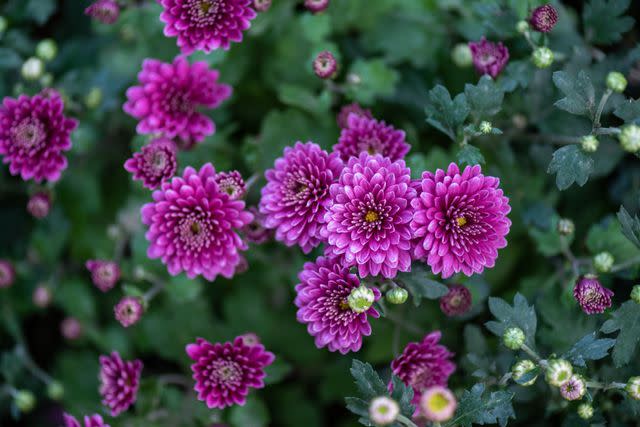
Chrysanthemums are a beloved container plant known for their fall interest, but they also have pest-repellent properties. "Chrysanthemums contain pyrethrum, a natural insect repellent commonly used in insecticides," says Spoonemore. Their daisy-like blooms repel ants, cockroaches, ticks, fleas, bedbugs, and Japanese beetles.
Zones: 5 to 9
Size: 1 to 3 feet tall x 1 to 3 feet wide, depending on variety
Care requirements: full sun; well-draining soil
Mint
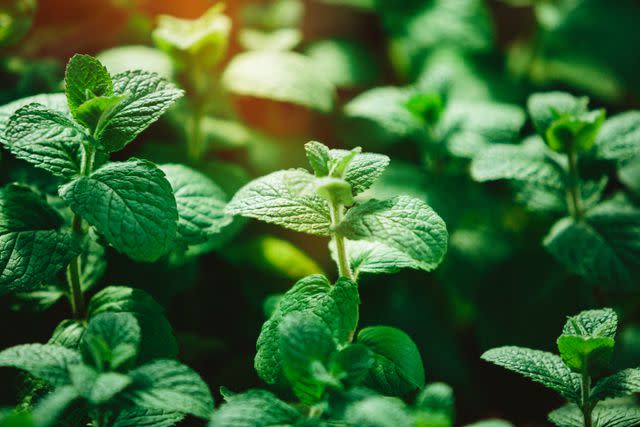
Mint (Mentha) is an upright perennial that forms thickets through underground stolons. "Most mints are very high in oily aromatics that are easily extracted from the leaves," says Pavlich. "Mint repels cabbage moths, ants, mice, and fleas." It's best to plant mint in containers, as it is a prolific grower that can take over the landscape.
Zones: 3 to 9
Size: 1 to 4 feet tall x 1 to 3 feet wide, depending on variety
Care requirements: full sun; well-draining, rich soil
Garlic
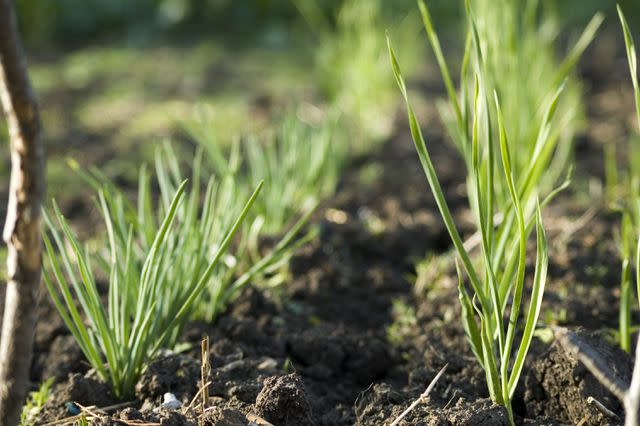
Garlic (Allium sativum) is a member of the allium family that grows long, slender leaves above the soil and produces a bulb of smaller cloves beneath the soil, says Spoonemore. It has a strong scent that repels aphids, cabbage loopers, and Japanese beetles.
Zones: 3 to 9
Size: 1 to 36 inches tall x 6 to 12 inches wide, depending on variety
Care requirements: full sun; well-draining, nutrient-rich soil
Catnip
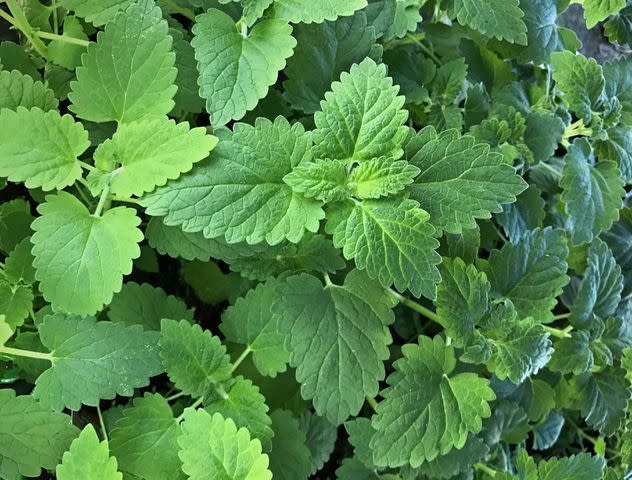
Catnip (Nepeta cataria) is in the same family as mint, so it has a similar scent and appearance. The fragrance is a deterrent to pests, including mosquitoes, cockroaches, and termites, says Spoonemore.
Zones: 3 to 9
Size: 2 to 3 feet tall x 1 to 2 feet wide
Care requirements: full to partial sun; well-draining soil
Lemongrass
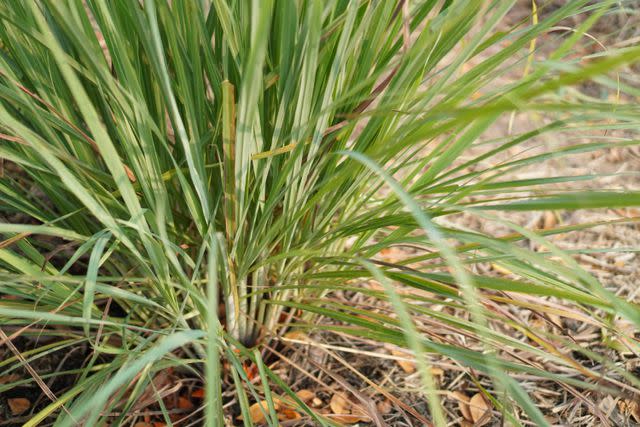
As the name implies, lemongrass (Cymbopogon) has a strong lemony scent similar to citronella that is especially unappealing to mosquitoes, says Spoonemore. The herb has tall grass-like leaves that are a great filler plant in the garden.
Zones: 9 to 11
Size: 3 to 6 feet tall x 2 to 4 feet wide
Care requirements: full sun; well-draining, moist soil
Marigold
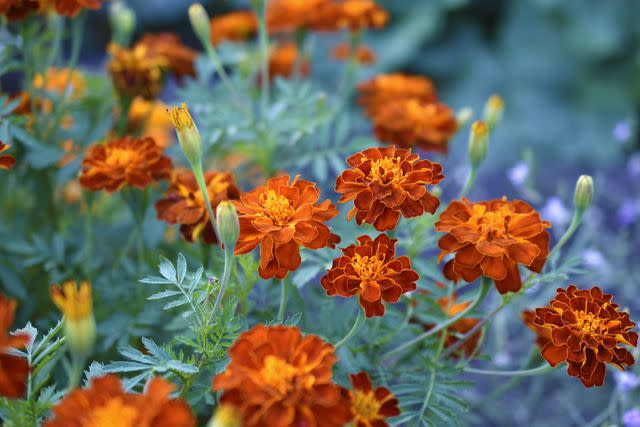
Often grown as a companion plant, marigolds (Tagetes) are great at keeping pests away from your garden. "Marigolds are bright, vibrant flowers available in shades of yellow, orange, and white," says Spoonemore. "These vibrant flowers emit a strong scent that repels mosquitoes, aphids, and other insects. They can also help with nematodes in the soil as well." Plant them near vegetables to deter pests.
Zones: 2 to 11
Size: 6 to 36 inches tall and 6 to 24 inches wide, depending on variety
Care requirements: full sun; well-draining soil
Nasturtium
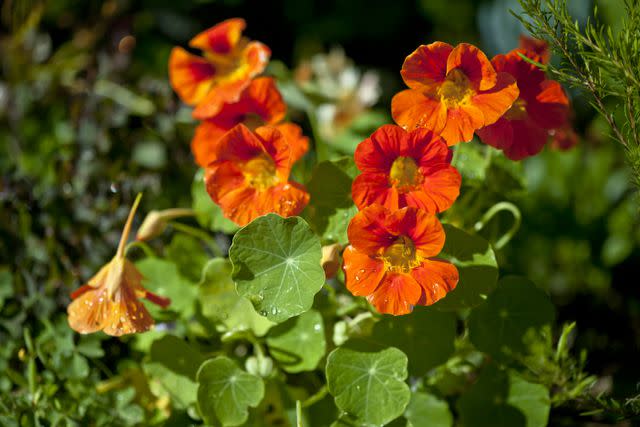
Nasturtiums (Tropaeolum) are colorful flowers that can attract beneficial insects like bees and butterflies to the garden, says Spoonemore. In addition to attracting beneficial pests, the plant can also deter whiteflies, squash bugs, and cucumber beetles. "With trailing growth habits, nasturtiums are great for containers," says Spoonemore.
Zones: 2 to 11
Size: 1 to 2 feet tall and 1 to 2 feet wide, depending on variety
Care requirements: full sun; well-draining soil
Eucalyptus
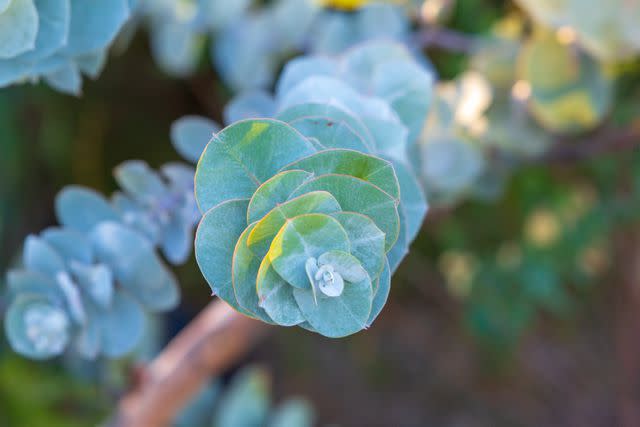
Eucalyptus leaves have a strong scent that deters mosquitoes, flies, and other insects from the garden. "You can plant it in your garden or use eucalyptus oil to create a natural insect-repellent spray," says Spoonemore. Since eucalyptus is native to Australia and considered invasive in parts of the United States, planting eucalyptus in a container is a great option.
Zones: 8 to 11
Size: Depends on variety
Care requirements: full sun; well-draining soil
Lemon Thyme
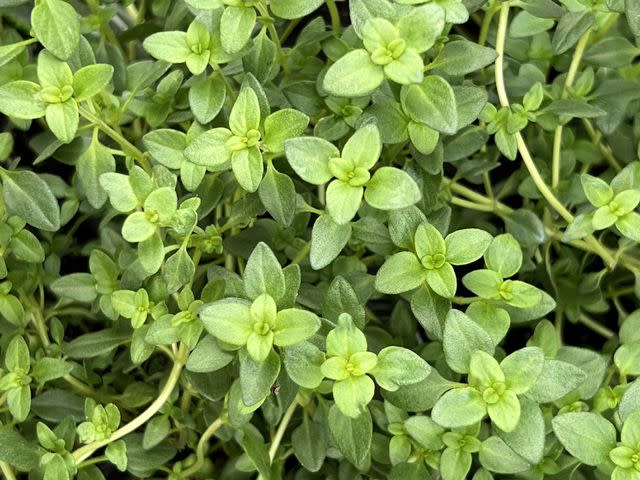
A fragrant herb with low-growing, oval-shaped leaves, lemon thyme (Thymus citriodorus) emits a lemony aroma that deters mosquitoes, cockroaches, and termites, says Spoonemore.
Zones: 5 to 9
Size: 6 to 12 inches x 12 to 18 inches wide
Care requirements: full sun; well-draining soil
Oregano
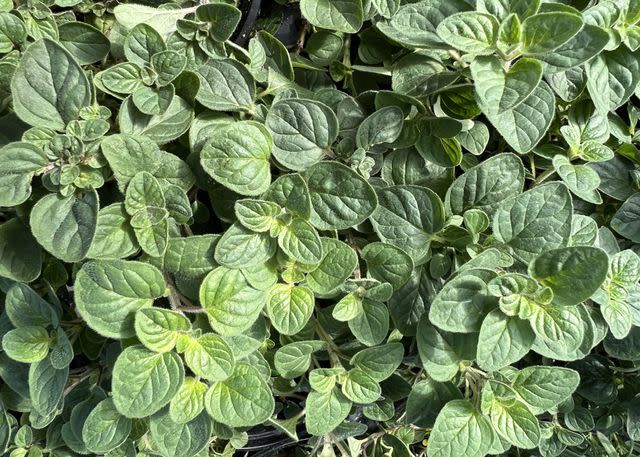
Oregano (Origanum vulgare) is a woody shrub that is drought-tolerant. Like many herbs, it has a strong aroma that can repel pests, including moths and cucumber beetles, says Pavlich.
Zones: 4 to 10
Size: 1 to 3 feet tall x 1 to 2 feet wide
Care requirements: full sun; well-draining soil
Scented Geranium
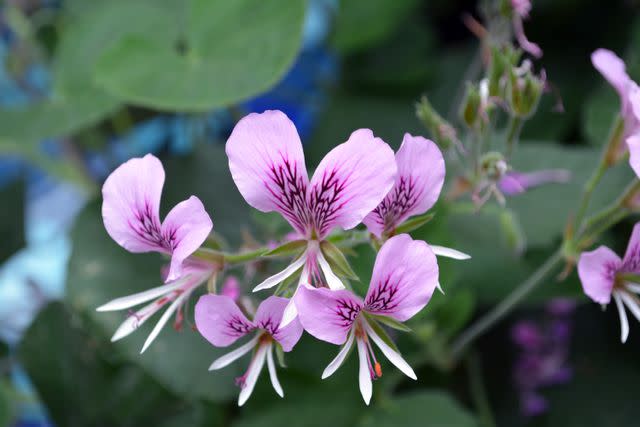
Great for growing in containers, scented geraniums (Pelargonium) have prominent oil glands in the leaves that readily emit a strong scent, says Pavlich. This flowering plant repels mosquitoes, fleas, wasps, deer, and rodents.
Zones: 3 to 9
Size: 4 to 48 inches tall x 6 to 36 inches wide
Care requirements: full sun to part shade; well-drained soil
Rue

Rue (Ruta graveolens) is a mounding perennial with lacy, blue-gray foliage and cheerful yellow flowers that bloom in summer. "Rue's fragrant leaves and stems release a pleasant scent for humans, but the same scent repels insects," says Pavlich. This plant repels aphids, Japanese beetles, flea beetles, and onion maggots.
Zones: 4 to 9
Size: 18 to 24 inches tall x 18 to 24 inches wide
Care requirements: full sun; moist, well-drained soil
Pyrethrum
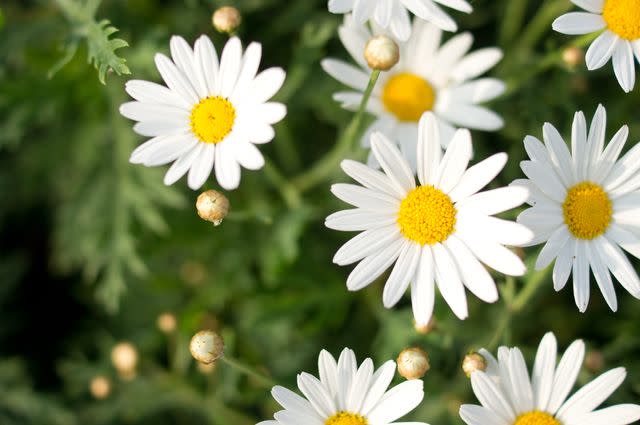
Pyrethrum produces daisy-like flowers in various shades of pink and white. The blooms act as a powerful insect repellent that deters mosquitos, fleas, flies, moths, and ants, says Pavlich.
Zones: 3 to 8
Size: 1 to 3 feet tall x 1 to 2 feet wide
Care requirements: full sun; moist, well-drained soil
Sage
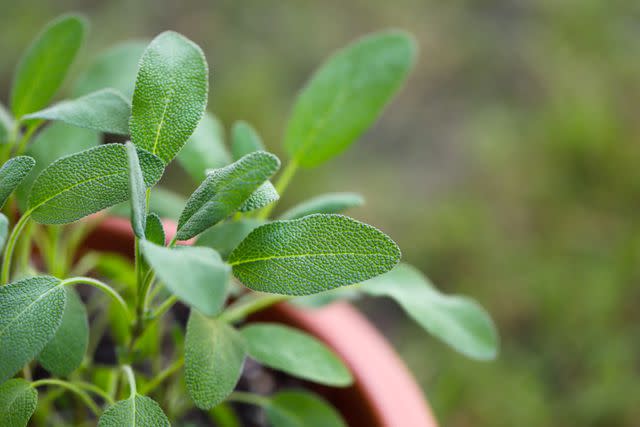
Sage (Salvia officinalis) is another culinary herb with pest-repelling properties. Its foliage can be silver-gray, purple, yellow, or variously variegated, says Pavlich. The strongly scented foliage offers protection against cabbage worms, beetles, and carrot rust flies.
Zones: 4 to 10
Size: 3 feet tall x 3 feet wide
Care requirements: full sun; well-drained soil
Read the original article on Martha Stewart.
